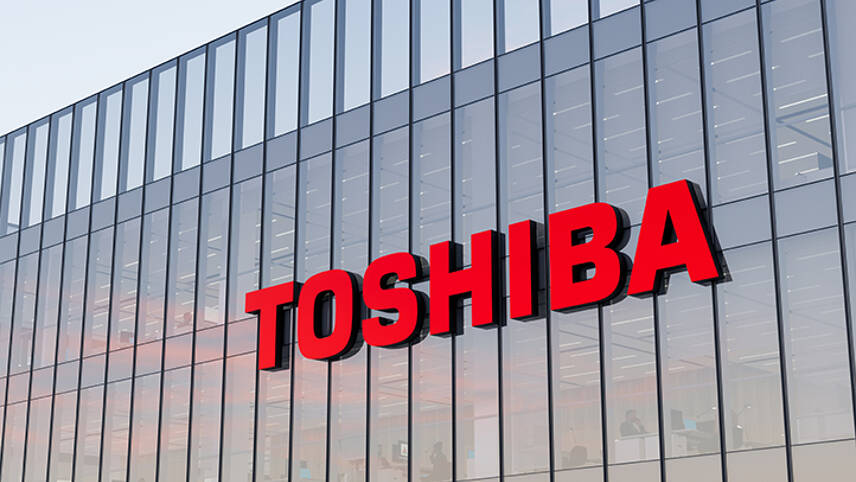This premium content is exclusive to edie Members.
To find out more about edie Membership, please click below.
If you are an existing member, login here

At a glance
Who: Toshiba Corporation and RWTH Aachen University
What: A new research hub with a focus on low-carbon and circular technologies
Where: Düsseldorf, Germany
Why: To put the company at the forefront of sustainable innovation in digital tech
When: Established in September 2023
The challenge
Toshiba has a long-term vision to become a regenerative company – one which has a positive impact on society and the environment. It is striving to do this while growing and has stated that being “sustainable” is no longer enough. Instead, systems change is needed to avert the worst of the climate and nature crisis in a way that also boosts the economy.
Investing in research and development (R&D) has always been crucial for technology companies. Now, they must strategically plan their R&D around their goals to reduce waste and cut emissions – and to enable the businesses and consumers that shop with them to do the same in their daily lives.
The solution
A new research hub with a focus on low-carbon and circular technologies, to be based out of RWTH Aachen University in Düsseldorf, Germany.
Toshiba is referring to the hub as its Regenerative Innovation Centre and noted that it will build on an existing long-standing partnership with universities and other players on the Bristol and Cambridge R&D facility in the UK.
How the project works
Using the University as a base, teams of academics and Toshiba staff – as well as experts from think-yank the Wuppertal Institute – will conduct R&D at the Centre under four key focus areas.
These are devices, energy, digital platforms and negative-emissions technologies. Devices teams will be developing the next generation of batteries and semiconductors that are easier to recycle, have a longer life cycle and are manufactured using lower-carbon materials and processes.
The energy team will focus on solutions for Toshiba’s offerings in renewable energy, energy efficiency and low-carbon hydrogen.
Those working on digital platforms will explore how artificial intelligence (AI), machine learning and internet of things (IoT) technologies can be used to harness and analyse emissions and energy-related data.
Finally, the negative emissions teams will conduct R&D on carbon capture, usage and storage (CCUS) technologies.
All teams will have a twin-track focus on developing new and next-generation technologies, and assessing how those already owned by Toshiba Group could be used in different applications.
Further partners for R&D activities are being encouraged to get in touch with Toshiba.
As well as R&D, the Centre will serve as a base from which Toshiba can build relationships with potential clients and partners. It will also enable the business to feed in to sustainability-related standards as they are developed by the EU.
The results
The Centre is fairly new and has not yet posted details of any specific workstreams and outcomes from these.
However, Toshiba has already published details of a number of innovative projects with successful outcomes from its academic R&D partnerships in the UK.
In 2021, the Cambridge Research Laboratory operated by Toshiba completed the first demonstration of quantum communications over optical cables that were more than 600km long. This breakthrough was hailed as a milestone towards the development of a faster and lower-impact internet system.
In the same year, it worked with South Gloucestershire Council and the Bristol Research and Innovation Lab to run a digital testbed for IoT technologies, connected to form a ‘smart city’. Smart cities can minimize traffic, air pollution and emissions using predictive technologies. This workstream saw more than 200 IoT nodes fitted to buildings, lamp posts and bus stops.
Business benefits
Toshiba has stated that its future profitability will depend on its ability to bring innovative next-generation solutions to market – and also on its ability to reduce the environmental impact of its operations, value chains and indeed the systems in which it operates.
The Centre should come with business benefits in terms of reputation, partnership-building and potentially enabling Toshiba to launch next-generation products and services before its competitors. There is also the opportunity to pioneer more sustainable products and services that meet the demands of corporates and other clients.
The company has described the Centre as “a powerful nexus for collaboration” with “renowned” partners including universities, businesses, local authorities and think tanks. It has also stated that, in time, it may establish satellite offices for the Centre in other European locations.
Industry context
In announcing the launch of the Centre, Toshiba representatives spoke extensively about the “historic challenges” of tackling the climate crisis and bringing the world within planetary boundaries, in a way that also improves social sustainability and grows the economy.
The tech sector has been keen to show itself as a first-mover on setting its own sustainability targets and in pivoting project and service offerings with a focus on positive environmental and social impact. Examples include Microsoft’s commitment to removing its historic carbon emissions and Apple’s 2030 target for carbon-neutral value chains.
Several of the markets for the technologies which Toshiba’s new Centre will focus on are forecast to undergo exponential growth in the coming years and decades. The AI market is currently valued at nearly $100bn and is expected to grow twentyfold by 2030, for example. Around 50 new CCUS facilities were announced globally between January 2022 and July 2023. And the number of IoT-connected devices is expected to exceed 22 million in 2027, from six million in 2022.
© Faversham House Ltd 2024 edie news articles may be copied or forwarded for individual use only. No other reproduction or distribution is permitted without prior written consent.

